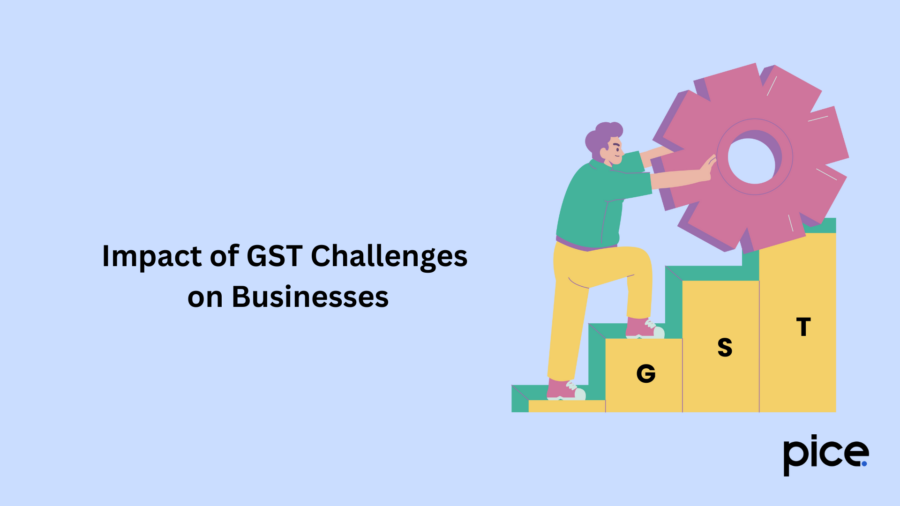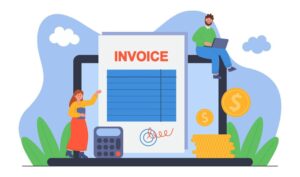GST- Recent Challenges and Problems
- 3 Oct 24
- 11 mins

GST- Recent Challenges and Problems
Key Takeaways
- Compliance Challenges: Adapting to GST’s filing and record-keeping requirements increases costs and complexity.
- Fluctuating Tax Rates: Frequent changes in GST rates complicate pricing and financial planning.
- IT Infrastructure Needs: Businesses, especially small ones, struggle with upgrading systems to meet GST's digital requirements.
- ITC Management Issues: Understanding and optimizing input tax credit remains a challenge for many businesses.
- Small Traders' Struggles: Limited resources, tech hurdles, and high compliance costs hurt small traders' profitability.
GST (goods and services tax) has helped businesses follow a unified taxation system in India. However, the implementation of GST had a significant impact on business operations across the country. Even though companies can reap multiple benefits from this indirect tax, the challenges of GST significantly led to a concern for businesses, especially retailers and small traders.
The adjustments in the tax rates, compliance procedures, and documentation made it challenging for businesses to grasp this new tax system. To learn more about the recent GST-related challenges, go through this blog.
Challenges and Problems with GST:

Here are the major challenges and factors of challenges that GST poses:
1. Complexity in Compliance:
Adherence to the GST regulations and norms is a critical challenge for many businesses. As GST involves the filing of periodic returns, as well as keeping of records and compliance with several strict procedures, they are faced with myriad challenges and complexities in their conversion to GST. For instance, belated filings are subject to penalties making it one of the challenges in filing returns. Companies have to adapt to changes at a fast pace to comply with GST norms.
2. Evolving Tax Rates:
Revision of tax rates is an integral part of GST. Businesses encounter persistent challenges in setting prices with the fluctuating tax rates. Some of the key points that have to be monitored in order to have an efficient financial plan include the top operating market and the changing tax rates.
3. IT Infrastructure Upgradation:
GST is an IT based system which calls for enhancement of the IT facilities. But, the major issues which are confronted by the businesses are related to the system up gradation and integration to cater the new age digital requirements of the GST system.
4. Educational Gaps:
Understanding GST requires extensive knowledge of the subject. Not everyone had a clear understanding of GST, which increased the complexity. Educating businesses, tax professionals, and the public about GST became a major challenge. It was essential for all parties to collaborate to share this knowledge.
5. Input Tax Credit Optimization and Management:
The GST system contains the mechanism of input tax credit (ITC) or GST input credit for businesses, which decreases the outward tax burden of the taxpayers. However, companies have to understand the eligibility criteria, documentation process and its use which turns into a problem for them.
6. Legal Interpretation:
The GST system requires strict legal compliance. A business confront challenges in adhering to the legal guidelines with a lack of knowledge. Further, they need to know the legal regulations thoroughly to comply with the laws which are challenging.
7. Supply Chain Adjustments:
The GST regulations require changes in supply chain management as a requirement. Therefore supply chain activities like storage, warehousing, distribution and delivery strategies have to be reconsidered by the businesses. Therefore, the new regulations brought about changes in the business operations for the companies that were registered under the GST Act 2017.
Impact of GST Challenges on Businesses
Here is the impact on businesses resulting from GST-related challenges:

- Increased Compliance Cost
GST compliance is cost-intensive as it includes GST registration, GST return filing, record keeping and audits. The high costs make it challenging for small and marginal businesses to compete with large-scale businesses. As a result, SMEs (small and marginal enterprises) face challenges in terms of profitability and competitiveness.
- Cash Flow Issues
Delays in the ITC (input tax credit) processes have given rise to certain issues such as cash flow problems, finance management, investment and growth opportunities for businesses. These are some of the causes of delays in refunds which lead to a lack of working capital, thus making it hard for businesses to finance their activities hence less investment.
- Increased Litigation
GST has led to an increase in a number of taxes or a complicated structure of taxes. Further, the digitised GST system is often subject to technical issues, making it difficult for taxpayers. This increase in litigation results in increased legal costs, and slows down dispute resolution thus making operational activities susceptible to complexities.
- Difficulty in Adapting to the New System
The introduction of GST has resulted in a complex tax system. Companies often face challenges in adapting to the new system with requirements of new documentation, and compliance for businesses. As the compliance cost increases businesses observe a reduction in productivity, thus impacting their profitability.
- Impact of Consumer Spending
Consumer spending habits have significantly changed with GST implementation. High tax rates have resulted in reduced disposal income and the purchasing power of consumers. As a result, there has been a decline in consumer spending across the country. Reduced consumer spending creates a challenge for companies that depend on consumer spending for investment and the flow of capital for businesses.
Get Online GST Registration
You can register for GST online by visiting the official GST portal. Under the ‘Services’ tab, press the 'Registration' option and select ‘New Registration’. After this, you have to follow the steps mentioned below to fill in Part A and Part B on the portal:
Part A:
Here are the steps to fill out Part A:
Step 1: Choose ‘Taxpayer’ from the drop-down list.
Step 2: Fill up the form GST REG-01 by entering particulars like the legal name of your business, email address, mobile number, state, PAN card, and more.
Step 3: Provide the OTP you have received on your mobile and email address to verify the details and press the ‘Proceed’ button.
Step 4: Upon verification, you will receive a TRN (Temporary Reference Number) which you have to note down for your future reference.
Part B:
After completing the above process, follow the steps below to fill in Part B:
Step 1: Log in to your account using your TRN as the credential and fill in the Captcha code. Verify the OTP you receive on your mobile and email address. This will redirect you to the GST registration page.
Step 2: Fill in the details of your business including company name, the state of business registration, PAN, business commencement date, and any other information required. Ensure to mention if you have a previous business registration.
Step 3: Submit the details of the proprietor or partners or directors such as name, designation, Aadhar, PAN, and DIN (document identification number). Additionally, submit the details of the authorized signatory.
Step 4: Fill in the principal place of business, its address, official contact number and nature of possessions in the company.
Step 5: If you have any additional places of business enter the details of it followed by the goods and services that your business will supply and the bank account details.
Step 6: Upload relevant supporting documents and tap on 'Save and Continue'. Next proceed to sign the application digitally.
Step 7: Press the ‘Submit’ button to complete the process. You will receive an ARN (Application Reference Number) to confirm your registration.
What Are the Difficulties Faced by Small Traders from GST?
Here are the difficulties that small traders often face due to GST:

- Limited Resources:
Small traders work with a limited amount of capital because they conduct business on a small scale. Therefore, many small traders experience issues relating to the absence of funds to adhere to GST requirements.
- Technological Hurdles:
The GST system is a digitalised system that involves a lot of technicalities. Nonetheless, small traders struggle to adhere to this system because they lack adequate digital literacy and access to technologies.
- Input Tax Credit (ITC) for Small Businesses:
One of the major issues that small traders have to face is to optimize the input tax credit (ITC). Addressing this issue can assist small traders in minimising their tax burden and enhance the cash flow position of their enterprise.
- Impact on Profit:
The compliance cost of the GST system is significantly high. As a result, it impacts the profit margin of small traders adversely. Small traders must combat the challenges to improve the viability of their businesses.
Why is GST important?
Here is why GST is important for retailers:
- Unified National Market Access:
GST eliminates inter-state barriers in the taxation structure of goods and services. This makes GST a unified tax structure in the broader market at the national level. Thus, businesses can expand their customer reach and grow the market beyond state boundaries while combating challenges in market access. Retailers can thereby gain nationwide market access with GST implementation and thus, enhances market opportunities.
- Reduction in Cascading Effect of Tax:
Retailers can claim an input tax credit (ITC) under the GST taxation landscape. This eliminates the cascading effects of taxation making it cost-effective for retailers. Thus, retailers can reap the benefits of the improved financial health of businesses, followed by positive cost implications with a systematic taxation structure and cost efficiency.
- Improved Competitiveness:
GST registration of retailers ensures adherence to tax laws thereby promoting improved competitiveness for retail businesses irrespective of the scale of operation. It promotes a healthy environment for growth businesses and improved reach among stakeholders.
- Contribution to Economic Growth:
Implementation of GST boosts economic growth for retail businesses. The stability and transparency in this efficient taxation system help businesses improve their operations contributing significantly to the nation's economic growth.
- Consumer Confidence Boost:
Retail businesses can effectively improve their brand reputation, image, trust and loyalty among consumers. Transparent pricing followed by a reduction in tax burden on consumers creates a positive impact on retail consumers. This additionally helps businesses develop a long-term relationship with their consumers in the market.
- Ease of Business Operation:
GST exhibits a simplified taxation process with accurate records, reduces paperwork and eliminates the involvement of administrative complexities. In this way, retailers can spend more time on business functions rather than the taxation system, which means there will be less interruption in business.
- Market Expansion Opportunities:
The GST system has eliminated variable taxes at the state level. This helped businesses expand their market to various states across the nation. Additionally, retail businesses have successfully removed various complex tax structures, which has improved their growth prospects.
Conclusion
The challenges of GST often obstruct business functions, irrespective of the business scale. However, the impact is significant for retailers and small traders compared to larger businesses. Awareness of the challenges can help you eliminate or overcome them with effective strategy implementation, thereby improving your business operations under the GST system.
💡If you want to streamline your payment and make GST payments, consider using the PICE App. Explore the PICE App today and take your export business to new heights.
 By
By 















